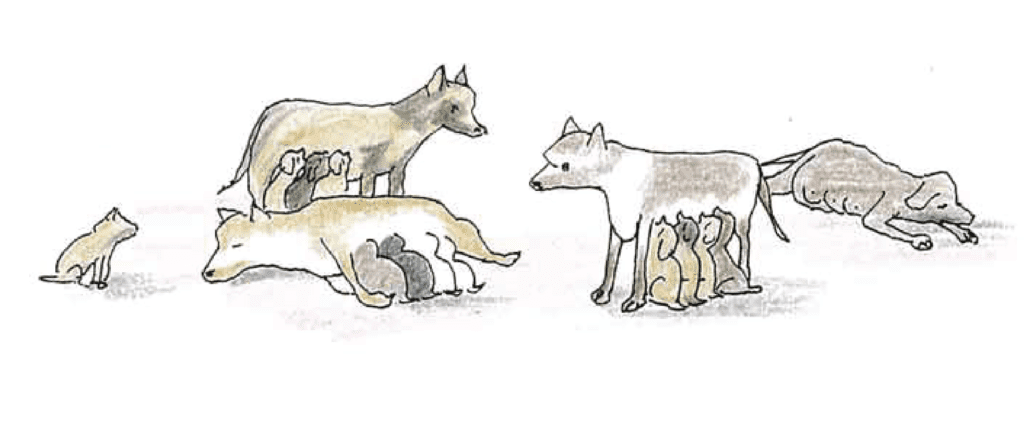CHAPTER FOURTEEN
Animal control by-laws
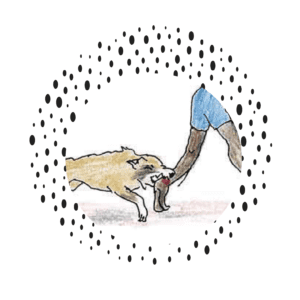
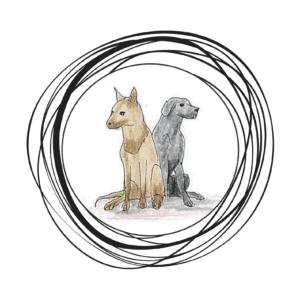
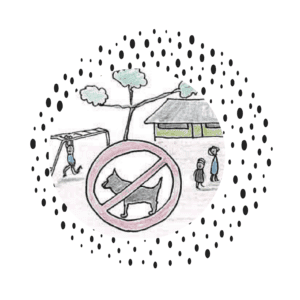
Animal control by-laws
Animal control by-laws are laws made by local government councils, that set rules about how and where people can keep different animals (e.g. dogs, cats, pigs, chickens, horses and cattle). By-laws also set penalties that can be issued to an owner who breaks these rules.
Many councils around Australia have animal control by-laws.
Many Aboriginal and Torres Strait Islander communities have not had animal management by-laws in the past, but many are now developing them.
It is important that as the EHP, you know about by-laws and how they are made and enforced.
Because you are probably the person who knows the most about your community’s animals, your council might need help from you, to get their by-laws right.
As the EHP, you will know which by-laws will be useful or good for your community.
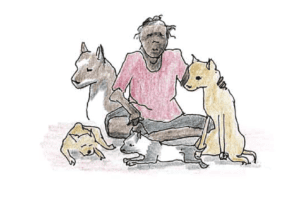
How are by-laws made?
The council will write up by-laws. They may ask you for your ideas about what the by-laws should cover.
Most councils take a fair bit of time to write their by-laws. This can be good, as it allows enough time for everyone to make sure that the by-laws will be a good fit for the community.
When the by-laws have been drafted, the draft should be presented to the community for consultation.
By law, community consultation about new by-laws must happen.
Consultation about by-laws is important so that the community can understand what is being proposed, and how they might be affected.
Consultation also allows the community to have their say about the by-laws, and make suggestions for improvements or changes.
Once the council has looked at what everyone thinks about the draft by-laws, they can then make any changes needed.
The final by-laws are then passed by council and the new law is made.

How are by-laws enforced?
If the council is using animal control by-laws, they will need to have a person in charge of enforcing the by-laws. In most places, enforcement of animal control by-laws is done by an Animal Control Officer.
In some communities the EHP is also the Animal Control Officer.
If an EHP also works as an Animal Control Officer for the council, they need formal identification, and might need to get extra training to become an ‘Authorised Officer’.
For EHPs living and working in the same community, enforcing by-laws can be hard.
To make things easier, sometimes it is a council worker from outside the community, and not the EHP, that is responsible for enforcing by-laws.
Animal control by-law enforcement is made easier if:
-
- The community is properly consulted before the by-laws are written up.
- The whole community has agreed to the by-laws.
- There is an awareness program to explain the reasons why the community needs the by-laws.
- The same rules apply to the whole community. So that by-laws are fair, there cannot be special treatment for some people or animals.
- There is a system of warnings before a problem animal is confiscated or euthanased.
- The council can show the community how the by-laws are helping make life in the community better, for example, by showing records of reduction in dog bites since the introduction of the by-laws.

Animal control by-laws and pounds
Most animal control by-laws rely on the Animal Control Officer’s ability to confiscate and impound animals. For this to happen, the community will need a pound.
The by-laws will need to set rules about:
-
- The reasons that animals can be put in a pound.
- How much time the owner has to reclaim their animal.
- What happens to the animal if it is not reclaimed by its owner within the set time.
Running a pound is a big job that needs careful planning.
Chapter 17 has more information about starting and running a pound.
What are animal control by-laws about?
Dog by-laws mostly talk about:
1. Registration
In most Australian towns, dogs, and sometimes cats, need to be registered with the local council.
When an animal is registered, information about the animal and its owner is recorded in the council’s registration system. This way, if an animal is found wandering, or has been causing problems in the community, the council will know who owns the animal.
Most councils charge animal owners a registration fee for each animal that they own. The amount for the registration fee is set out in the by-laws.
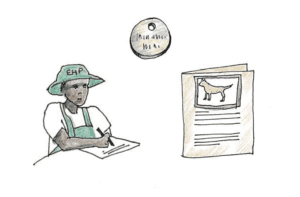
If people do not register their animals, they can then be fined. The amount of the fine is also set out in the by-laws.
Animal registration systems may be good in communities to help:
Get money to fund the animal health and management program.
The money owners pay for animal registration can be used to buy medicine for the animals. This medicine may then be given for free to animals that are registered.
Animals that are not registered will not be eligible to get medicine unless their owner pays for the medicine or registration.
Get animals desexed.
Registration fees can be set so that desexed animals are much cheaper to register than animals that can still breed. By doing this, registration fees can act as incentive to encourage people to get their animals desexed.
For this to work, the registration fee for animals that can breed, needs to be higher than what it costs to get the animal desexed.
Working out who is in charge of an animal.
When there is a good animal registration system, if the animal welfare laws or the dangerous dog laws are broken, it is easy to find the real owner of the animal.
This can save the Animal Control Officer a lot of time and trouble trying to work out who owns the animal.
2. Numbers and types of animals per house
By-laws may set rules about the number of animals that can be kept in a house.
Most by-laws put a limit on the maximum number of dogs and cats that can be kept at each house.
For dogs, this limit is usually between 2 to 4 dogs per house. Some councils also have by-laws that say how many cats are allowed be kept in each house.
Some people might need to keep more animals due to cultural reasons.
If people want to keep more animals than what the by-laws allow, they need to write a letter to the council and get special permission.
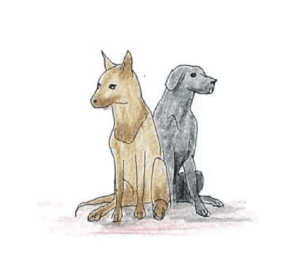
If the community is just starting with animal control by-laws, lots of houses may have more animals than they are allowed.
The council, and the community need to talk about how they will get down to the numbers allowed by the by-laws. This is a discussion that you, as the EHP, should be involved with.
There are two main ways the community can get animal numbers down to what the by-laws allow:
-
- Get owners to surrender their excess animals for euthanasia or rehoming outside of the community.
– The community may not like doing this. If they do not like it, they will not support the by-laws. Usually, this is not a good approach. - Take 4 to 5 years to get down to the number limit. People who currently have more animals than allowed can use that time to let their animals die naturally. Until they get down to the right number of animals, it is important that they do not get any replacement animals.
– This approach is normally a much better way of bringing in new animal control by-laws that limit the number of animals that each house can have.
- Get owners to surrender their excess animals for euthanasia or rehoming outside of the community.
Animal control by-laws often also talk about the types of animals that can be kept on different size blocks. Most councils will make rules that say that large animals like cows and horses cannot be kept in backyards, and must instead be kept in paddocks outside of the community.
3. Dangerous dogs
Most state and territory governments have laws about the management of dangerous dogs. These laws talk about what should happen with dogs that threaten people’s safety.
Even if there are state or territory laws about the management of dangerous dogs, most council by-laws will also have a section on dangerous dogs. Sometimes the council by-law just says the same as the state or territory law; sometimes the council by-law makes extra rules about dangerous dogs in their community.
A dog is called a dangerous dog if it:
-
- bails people up and makes them scared, and/or
- bites people.
Different councils have different ways of dealing with dangerous dogs.
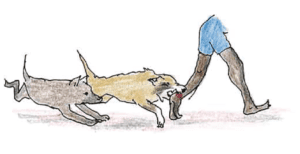
Some council by-laws state that any dog that bites needs to be euthanased straight away. In other councils, when a dog bites a person, the Animal Control Officer gives a notice to the dog’s owner. The notice might say things like:
-
- the dog is declared a dangerous dog
- the dog must be kept locked in a yard
- a dangerous dog sign must be placed on the gate
- the dog must wear a special collar
- the owner has to pay an extra fee to register a dangerous dog
If the owner does not do these things, then the Animal Control Officer can confiscate the dog, and have it euthanased.
Chapter 15 has more information on dangerous dogs.
The Australian Veterinary Association (AVA) also has good information on their website:
Dangerous Dogs – A sensible solution policy and model legislative framework (2012)
4. Public Health
Animal control by-laws are also made to protect the health of people. These might include:
-
- Animal-free zones (places where animals are not allowed to be e.g. clinic, school, office)
- A requirement for owners to pick-up and dispose of their dog’s faeces in public places.
- A requirement for owners to bury any dead animals (and not just let the body rot)
- Rules about dogs barking or howling, and interrupting people’s ability to work or sleep

5. Animals ‘at large’
An animal ‘at large’ means an animal that is wandering around a community without its owner.
Many communities do not have fences around their houses. This means in communities many animals move around at large.
If an animal is not causing trouble, this may be ok, but some councils will still want to have this as a by-law.
The by-law can give the Animal Control Officer the right to impound an animal that is at large.
This law can be if useful if people abandon their animal, or if the animal is causing trouble in the community.
6. Off lead areas
These are places in the community where dogs are allowed to run free. The laws about at large dogs do not apply in these places.
By-laws about off lead areas will talk about where these places are in the community.
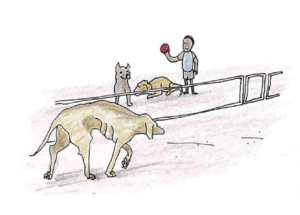
Other laws about animals
Animal welfare laws
Even though it is usually not the local council’s responsibility to enforce animal welfare laws, EHPs can help to promote the community’s understanding of good animal welfare.
More information on animal welfare laws can be found in Chapter 16.
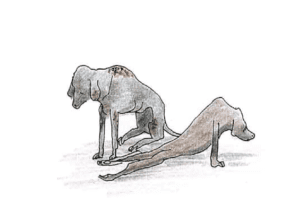
Breeder registration laws
Some state and territory governments have made laws for people that are breeding dogs. These laws apply to all owners of dogs that are breeding, no matter if the breeding was intentional or accidental.
In these states or territories, the law says the owner of the breeding bitch now needs to:
-
- register for a ‘supply number’.
- get the pups microchipped, and link the microchip number to the supply number.
- record the supply number on any advertisements about the pups, no matter if the pups are sold or give-aways.
Breeder registration laws are usually made by the state or territory Department of Agriculture of Department of Primary Industries, but the local council might be required to enforce them. It is important for EHPs to be aware of these laws and promote them to the community.
